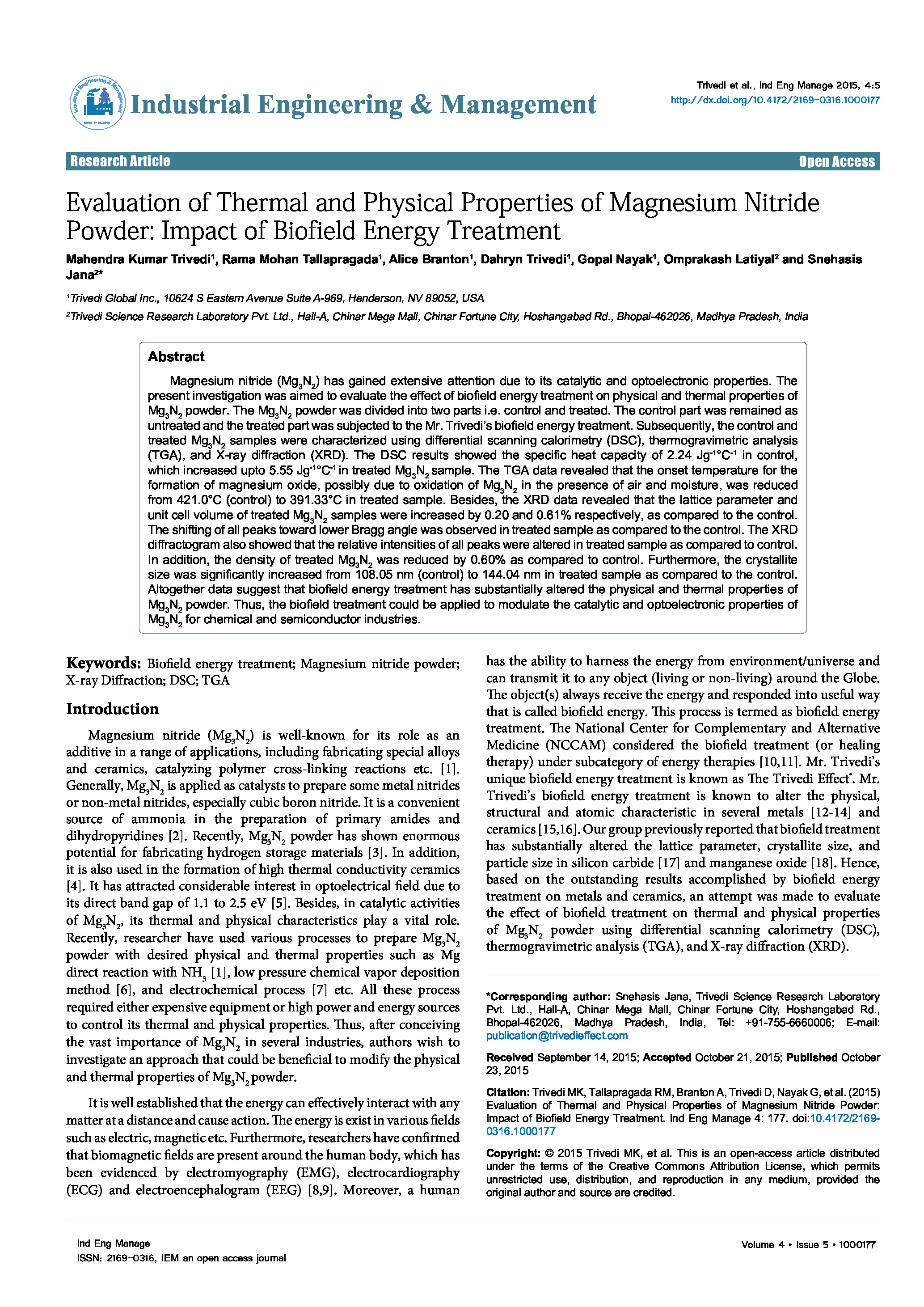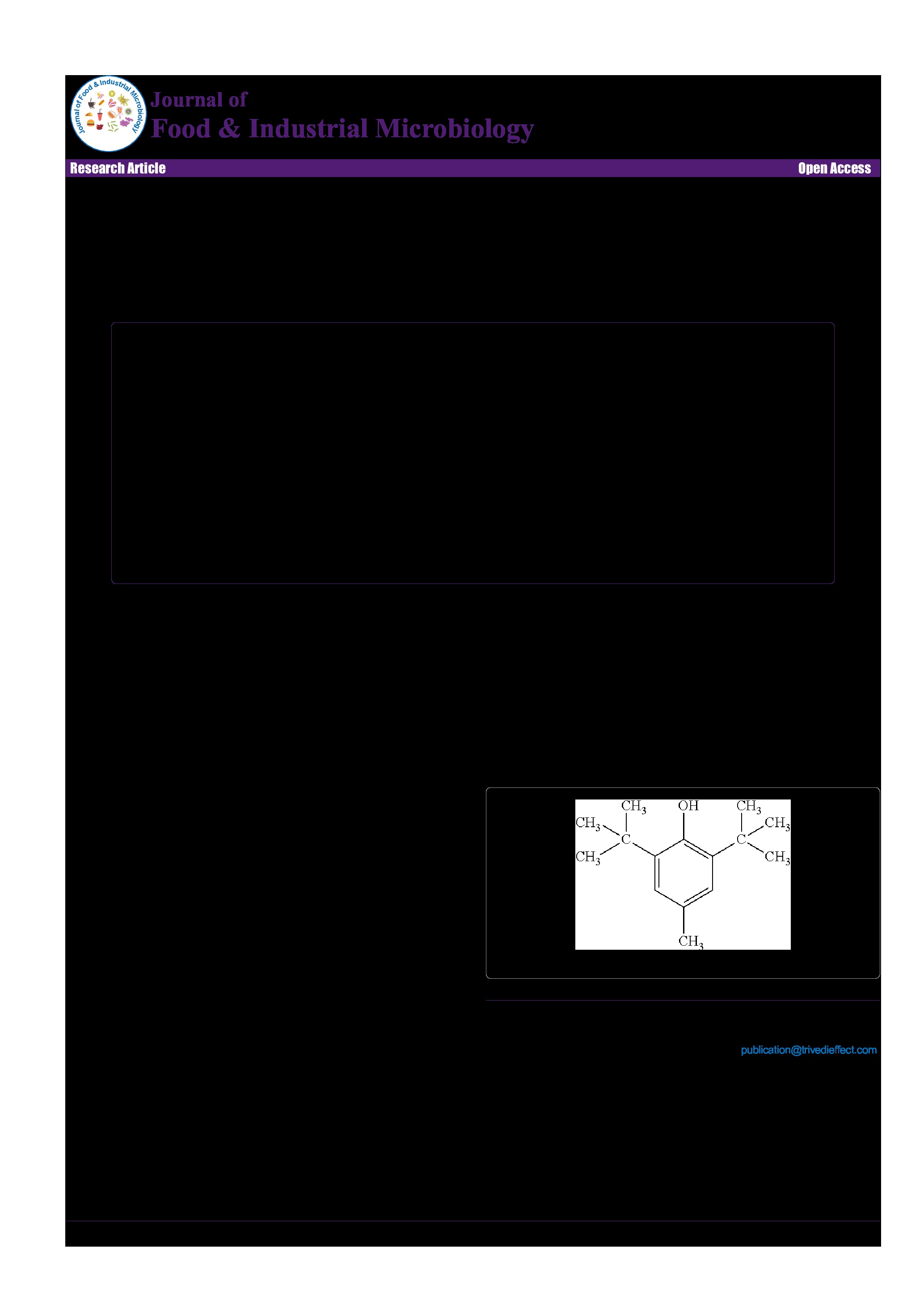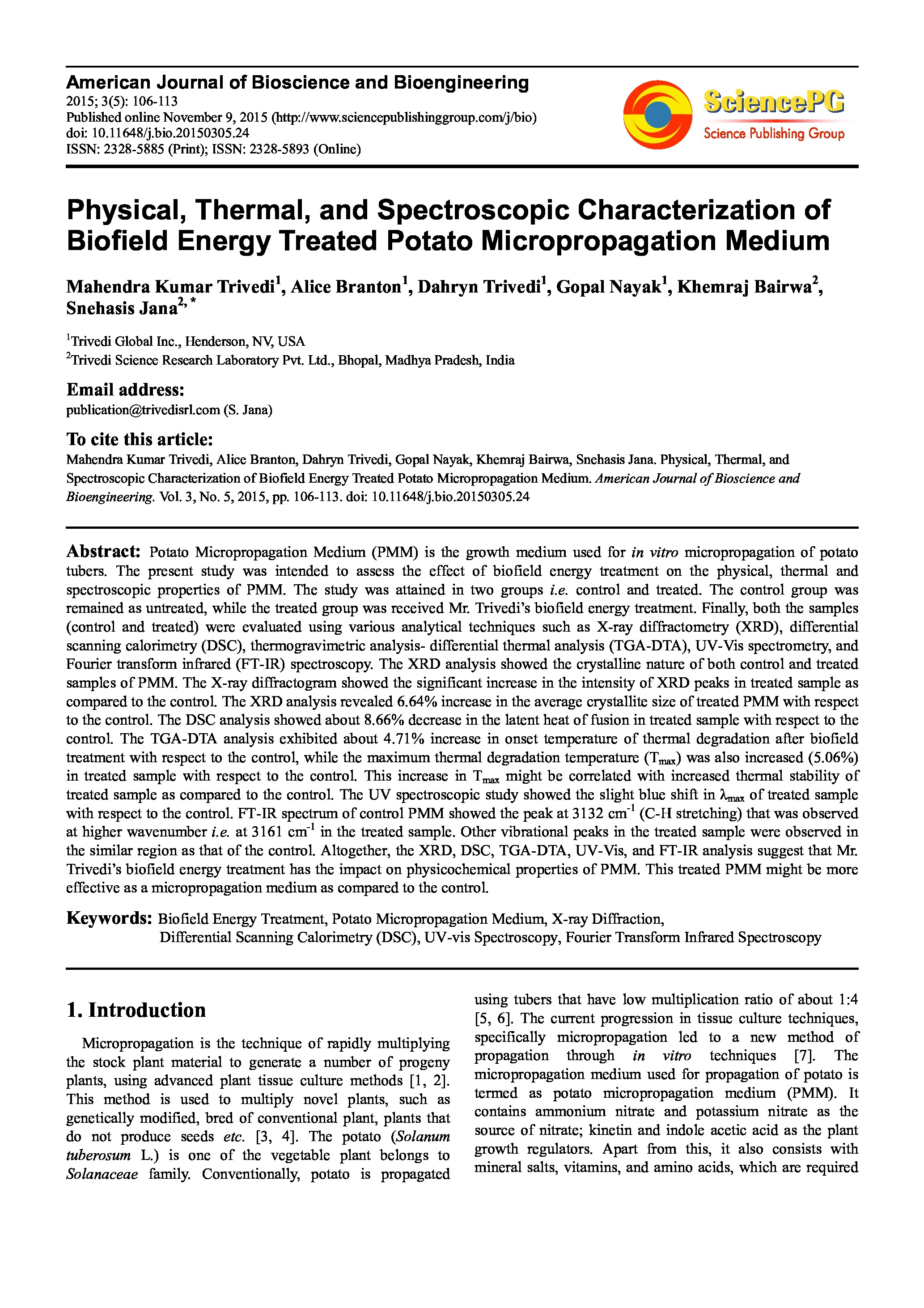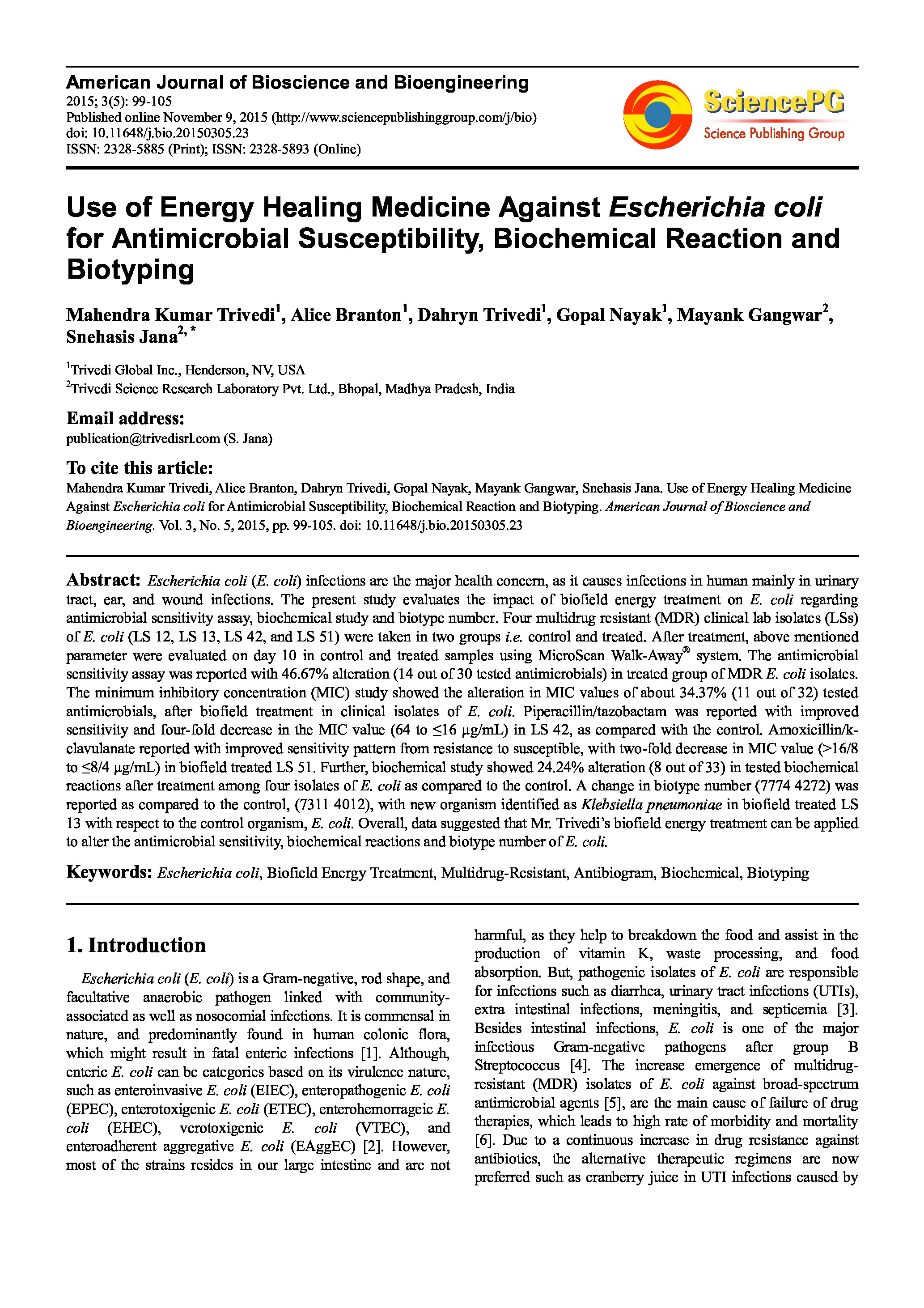Date of upload:
30.11.2016
Co-author:
Mahendra Kumar Trivedi, Alice Branton, Dahryn Trivedi, Mayank Gangwar, Snehasis Jana
Abstract:
Escherichia coli (E. coli) infections are the major health concern, as it causes infections in human mainly in urinary tract, ear, and wound infections. The present study evaluates the impact of biofield energy treatment on E. coli regarding antimicrobial sensitivity assay, biochemical study and biotype number. Four multidrug resistant (MDR) clinical lab isolates (LSs) of E. coli (LS 12, LS 13, LS 42, and LS 51) were taken in two groups i.e. control and treated. After treatment, above mentioned parameter were evaluated on day 10 in control and treated samples using MicroScan Walk-Away® system. The antimicrobial sensitivity assay was reported with 46.67% alteration (14 out of 30 tested antimicrobials) in treated group of MDR E. coli isolates. The minimum inhibitory concentration (MIC) study showed the alteration in MIC values of about 34.37% (11 out of 32) tested antimicrobials, after biofield treatment in clinical isolates of E. coli. Piperacillin/tazobactam was reported with improved sensitivity and four-fold decrease in the MIC value (64 to ≤16 µg/mL) in LS 42, as compared with the control. Amoxicillin/k-clavulanate reported with improved sensitivity pattern from resistance to susceptible, with two-fold decrease in MIC value (>16/8 to ≤8/4 µg/mL) in biofield treated LS 51. Further, biochemical study showed 24.24% alteration (8 out of 33) in tested biochemical reactions after treatment among four isolates of E. coli as compared to the control. A change in biotype number (7774 4272) was reported as compared to the control, (7311 4012), with new organism identified as Klebsiella pneumoniae in biofield treated LS 13 with respect to the control organism, E. coli. Overall, data suggested that Mr. Trivedi’s biofield energy treatment can be applied to alter the antimicrobial sensitivity, biochemical reactions and biotype number of E. Coli.




